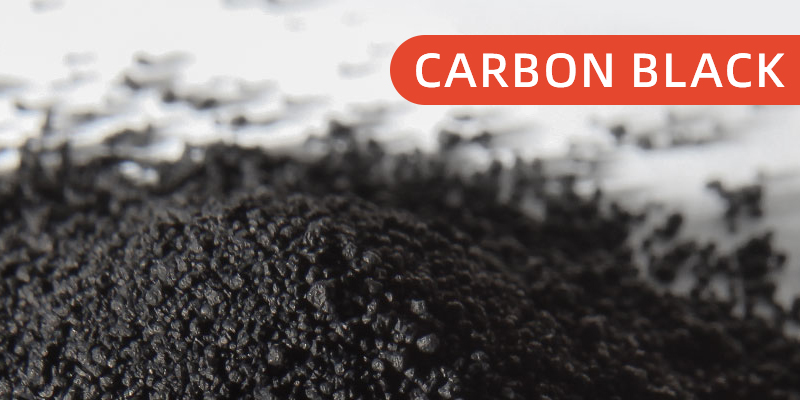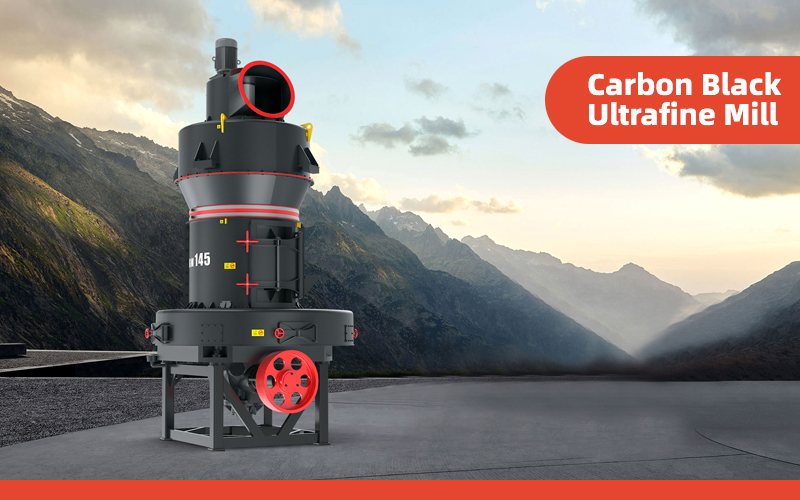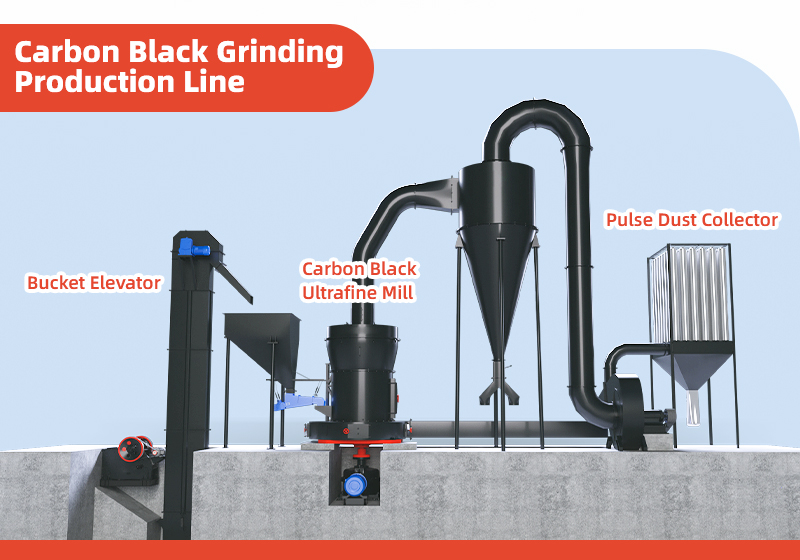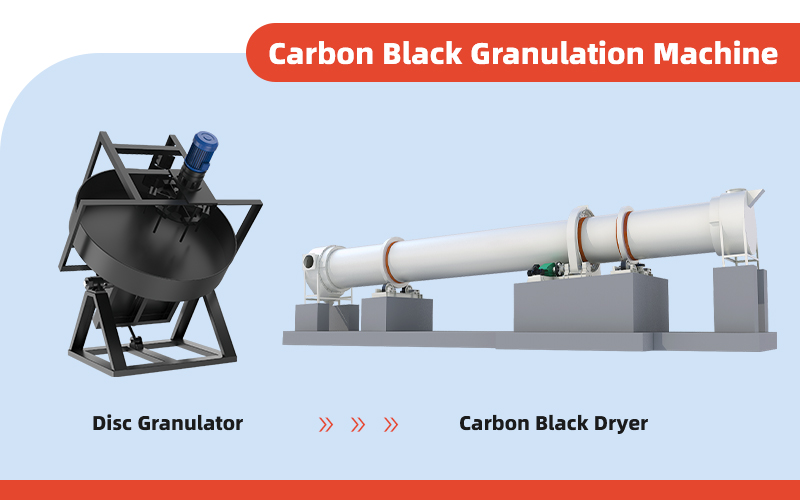Carbon black is dubbed "industrial gold" for its extensive use in rubber, plastic, ink, coating, and more.
This article will delve into its processing, covering grinding, granulation, drying, and the necessary equipment.
What is carbon black?
Carbon black is typically produced from coal tar, petroleum, or natural gas, heated at temperatures ranging from 1,420 to 1,980℃, causing the carbon to evaporate and then cool into particles. Essentially, it is a form of soot.

Historically, carbon black was commonly used as a pigment for murals. Today, it is classified into various grades based on combustion conditions, materials, and temperatures.
It finds application in rubber, plastics, coatings, inks, cosmetics, beauty, energy storage, and automotive industries, with N-type carbon black being the most prevalent type.
| Grade | Characteristics | Application area |
| N330 | Medium and high enhancement | Rubber, tires, plastic products |
| N550 | Medium to high reinforcement, high heat resistance | Rubber, tire manufacturing, colored rubber products |
| N660 | Moderate enhancement | Rubber, plastic products, ink, cables |
Carbon black grinding machine
Why is grinding necessary for carbon black? Is it possible to sell raw carbon black without processing?
The answer is no. Unground carbon black exhibits issues such as uneven particle size, poor dispersion, and limited surface area, directly impacting product performance.
Improper handling of raw carbon black can lead to environmental pollution and low direct sale prices, limiting profit margins.

To address these challenges, FTM Machinery engineers have developed a carbon black ultrafine mill based on the Raymond mill. Here are the mill's specifications:
- Model: HGM88, HGM95, HGM100, HGM120, HGM130, HGM138, HGM160, HGM175, HGM190
- Output particle size: 101 to 1693 mesh (0.25–0.015 mm)
- Material: Specifically designed for grinding non-flammable, explosive, and brittle materials with a Mohs hardness of less than 6 and a moisture content of less than 6%.
- Features: Compared to Raymond mills of similar efficiency, it can produce 10%–20% more powder; the particle size can be adjusted without machine stoppage; good sealing for stable operation; long service life of wearing parts
After grinding with the carbon black super mill, the particle size becomes more uniform, dispersion is improved, agglomeration is reduced, and surface area increases.
This enhances the contact area between carbon black and other materials, improving product performance. Furthermore, when made into N-type series products, it commands a higher price and profit margin, making it more competitive and commercially valuable in the market.
If you're looking to set up a complete carbon black grinding production line, here's how you should configure it:

FTM Machinery engineers recommend purchasing a carbon black ultrafine mill that combines grinding and grading, along with a bucket elevator. To ensure worker health and environmental protection, a pulse dust collector is also necessary.
In this production line, carbon black powder is transported to the carbon black ultrafine mill via a bucket elevator for grinding until it reaches a fineness of 325 mesh or higher, producing high-quality N-type products.
Simultaneously, the pulse dust collector effectively reduces dust pollution. The maximum processing output of this production line can reach 40 tons per hour.
Carbon black granulation machine
If grinding is to optimize the performance of carbon black, then granulation is to improve its convenience and handling.
Carbon black powder tends to scatter during transportation and handling due to its low bulk density.
To address this, FTM Machinery engineers suggest adding appropriate amounts of water and binders to the powder, converting it into micro-particles for easier handling, transportation, and use, without affecting its market application.

In this production line, a disc granulator and a carbon black dryer are employed.
The disc granulator evenly converts the mixed carbon black powder, water, and binder into micro-particles. Subsequently, the dryer evaporates the water in the particles through high-temperature airflow, ensuring particle strength and stability.
Granulated and dried carbon black micro-particles offer several advantages in performance and application:
- High density: increases bulk density for easy storage, reducing transportation and storage costs.
- Anti-scattering: reduces environmental pollution and resource waste, while lowering the risk of dust explosions and improving operational safety.
- Easy handling: facilitates accurate measurement to ensure addition ratio accuracy, improves mixing uniformity, and enhances fluidity for easy transportation and automated processing.
- Widely applicable: adapts to rubber, plastic, coating, and other processing technologies, improving product performance and quality, reducing pretreatment steps, and enhancing production efficiency.
Carbon black in the future
In recent years, with the advancement of science and technology and the promotion of sustainable development concepts, recycled carbon black (RCB) produced from the pyrolysis of waste tires or other carbon-containing waste has emerged.
Compared to traditional virgin carbon black (VCB) from fossil fuels, RCB differs significantly in production sources, purity, quality, application areas, environmental impact, and price.
| Category | Virgin carbon black (VCB) | Regenerated carbon black (RCB) |
| Production source | Fossil fuel | Pyrolysis of used tires or other waste materials |
| Purity and quality | High purity, controllable quality | Lower purity, greater quality fluctuations |
| Application areas | High-end market (tires, ink, electronic materials) | Low-purity demand market (rubber products, construction materials) |
| Environmental impact | Emits 2.5 tons of CO₂ per ton produced | Emits 439 kg of CO₂ per ton produced, environmentally friendly |
| Price | Highly volatile, influenced by fossil fuel market | Low and stable prices, not dependent on fossil hydrocarbons |

